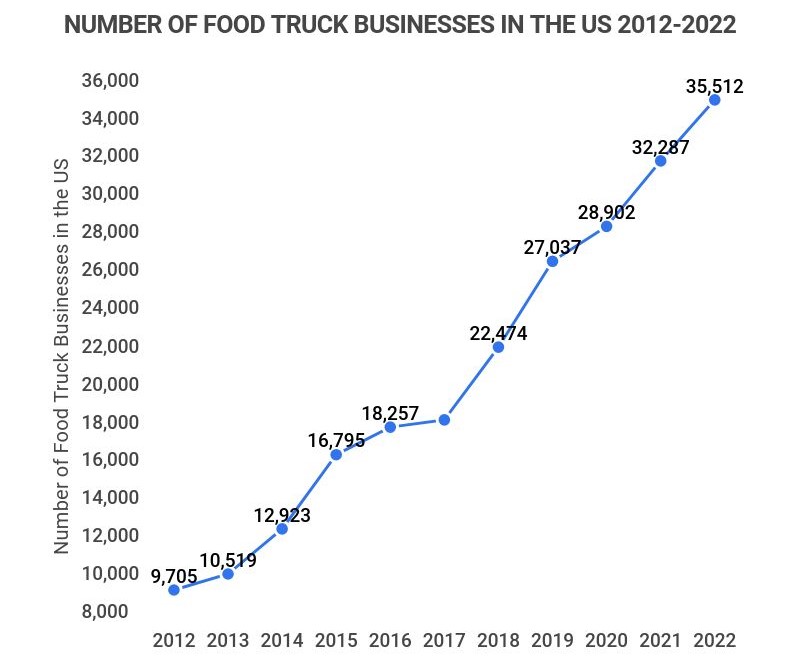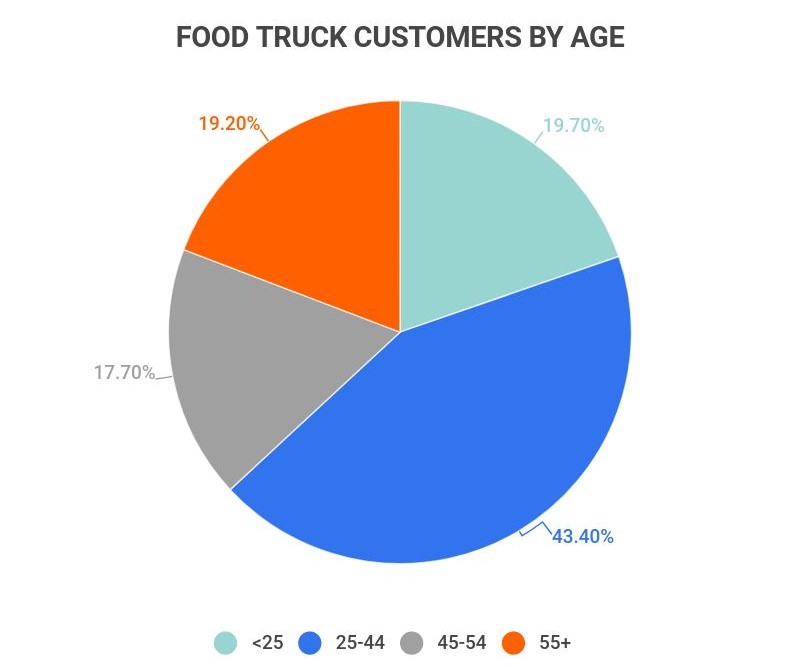- Industry Statistics
- Wedding Industry Statistics
- Yoga Industry Statistics
- Music Industry Statistics
- Landscaping Industry Statistics
- Bicycle Industry Statistics
- Coffee Industry Statistics
- Car Rental Industry Statistics
- Home Improvement Industry Statistics
- Insurance Industry Statistics
- Supplements Industry Statistics
- Golf Industry Statistics
- Fitness Industry Statistics
- US Media And Entertainment Industry Statistics
- Firearm Industry Statistics
- Financial Services Industry Statistics
- Health And Wellness Industry Statistics
- Trucking Industry Statistics
- Wine Industry Statistics
- Pet Industry Statistics
- Mobile App Industry Statistics
- Digital Marketing Industry Statistics
- Hotel Industry Statistics
- Retail Statistics
- Robotics Industry Statistics
- Jewelry Industry Statistics
- Appointment Scheduling statistics
- Restaurant Industry Statistics
- Food Delivery Statistics
- Food Truck Industry
- Fashion Industry
- Real Estate Industry
- US Film Industry
- US Beverage Industry
- USu202fFast Food Restaurants
- US Construction Industry
- US Book Industry
- Cosmetics Industry
- US Food Retail Industry
- US Pharmaceutical Industry
- US Healthcare Industry
- Oil And Gas Industry Statistics
- Airline Industry
- Nursing Shortage Statistics
- Automobile Industry
- Nursing Home Statistics
Research Summary. Whether they’re at a festival or a farmers’ market, food trucks allow customers to taste local cuisine without having to pause what they’re doing and take time to go to a restaurant. Here are the key statistics on the U.S.’s food truck industry:
-
There are 35,512 food truck businesses in the U.S.
-
The market size of the U.S. food truck industry is $1.16 billion, as of 2021
-
It costs $28,276 on average to purchase the permits required to open a food truck.
-
Adults between the ages of 25 and 44 make up 43% of food truck spending.
-
The U.S. food truck industry has grown at an average annual rate of 12.1% since 2016
For further analysis, we broke down the data in the following ways:
Trends + Projections | Business Owners + Customers | Location + Profitability

U.S. Food Truck Market Size 2012-2021
| Year | Market Size (in Millions) |
|---|---|
| 2021 | $1,162.3M |
| 2020 | $1,109.7M |
| 2019 | $1,211M |
| 2018 | $1,027M |
| 2017 | $880.7M |
| 2016 | $843.9M |
| 2015 | $733.8M |
| 2014 | $686.6M |
| 2013 | $618.4M |
| 2012 | $534.2M |
General Food Truck Industry Statistics
-
The food truck industry paid $318 million in annual wages in 2021.
-
The average annual wage in the food truck industry is $38,064.
-
There are 40,547 food truck employees in the U.S.
-
The average food truck business has 1.2 employees.
-
The food truck industry has an estimated annual revenue of $2.7 billion.

Food Truck Industry Trends and Predictions
-
In 2011, there were 8,677 food truck businesses in the U.S.
This is just 24% of the 35,512 that are in business in 2021.
-
The food truck industry has an average annualized business growth rate of 12.1% from 2016 to 2021.
The U.S.’s food truck industry has grown steadily in the last decade, and even in the last five years, it’s still seen rapid expansion, growing an average of 12.1% each year.
-
From 2016 to 2021, the food truck industry has had an average annual employment growth rate of 8.6%.
Besides one small dip from 2016 to 2017, the growth rate has consistently increased during this time. In 2021 alone, the rate is 8%.
-
The food truck industry’s market size has grown by an average of 6.6% each year from 2016 to 2021.
As of 2021, the industry’s market value is $1.16 billion, up slightly from 2020’s $1.1 billion. The market grew steadily from 2016 to 2019, reaching a value of $1.21 billion in 2019 before dipping down in 2020 and back up in 2021.
-
In 2022, the food truck industry market is expected to grow by 3.4%.
This would mean the market value would hit $1.202 billion in 2022, surpassing 2021’s $1.162 billion.

Number of Food Truck Businesses in the U.S. 2012-2022
| Year | Number of U.S. Food Truck Businesses |
|---|---|
| 2022 | 35,512 |
| 2021 | 32,287 |
| 2020 | 28,902 |
| 2019 | 27,037 |
| 2018 | 22,474 |
| 2017 | 18,675 |
| 2016 | 18,257 |
| 2015 | 16,795 |
| 2014 | 12,923 |
| 2013 | 10,519 |
| 2012 | 9,705 |
Food Truck Business Statistics
-
There are 35,512 food truck businesses in the U.S.
This is up by 10% from 2021’s total number, 32,287.
-
Business districts, street food markets, and music festivals are some of the best places to park a food truck.
Business districts often don’t have many dining options but do have lots of hungry workers with plenty of money and not a lot of time, making food trucks an attractive option for them.
Street food markets are designed for food trucks, so customers who show up already want to buy food from a food truck, cutting down on marketing effort and expenses.
Music festivals are similar in that attendees expect to purchase a meal and are a captive audience with only one dining option: food truck food. This makes these events highly lucrative for food truck owners.
Other profitable places to park a food truck include parks and retail areas.
-
Food truck owners spend an average of $28,276 on permits, licenses, and ongoing legal compliance during their first year of operation.
This doesn’t include the cost of the truck, equipment, ingredients, employees, and a prep kitchen. Once all is said and done, it can cost over $125,000 to start a food truck business.
-
43% of monthly food truck spending is done by 25- to 44-year olds.
Another 20% comes from customers under age 25, so it could safely be said that food trucks’ target age group is those under 44.

Food Truck Location and Profitability Statistics
-
Portland, Oregon, is the number one city for food trucks.
It has the lowest average cost to get the permits required to start and operate a food truck for a year ($7,287) and some of the easiest restrictions to comply with.
Here are the other cities on the top ten cities for food trucks list:
-
Denver
-
Orlando
-
Philadelphia
-
Indianapolis
-
Houston
-
Austin
-
Los Angeles
-
New York City
-
Nashville
-
-
The most difficult city to own a food truck in is Boston, Massachusetts.
Boston scores the lowest (number 20 out of 20) of the major cities on how easy it is for food truck owners to get required permits. It also scores the lowest in terms of the cost and effort it takes to maintain the required permits to continue operating.
The restrictions Boston places on food trucks were only the seventh most difficult to comply with, though.
The other four cities in the bottom five overall most difficult cities in which to operate a food truck are Washington, D.C., San Francisco, Seattle, and Minneapolis.
-
California has 753 food truck businesses, the highest of any state.
Texas takes second place with 549 food truck businesses, and Florida takes third with 502.
-
Burgers are the most profitable food truck menu item.
Thanks to their consistent popularity, relatively low cost, and opportunity for creative license, burgers are considered the most profitable item you could offer on a food truck. The rest of the top seven list includes:
-
Indian street food
-
Stone baked pizza
-
Loaded fries
-
Grilled cheese
-
Falafel
-
Macaroni and cheese
-
Food Truck Industry FAQ
-
Is the food truck industry competitive?
Yes, the food truck industry is competitive. Not only do food trucks compete with other food trucks, but they also compete with brick-and-mortar restaurants and even grocery stores.
People normally have several options for where they want to eat, which means attracting customers is important for food truck operators to take seriously. This is also why food trucks are especially successful at events where their customers are a captive audience and can’t go to a restaurant or make their own food.
Food truck business owners can gain a competitive edge within the food truck industry by offering a unique product, choosing the right location, and using effective marketing techniques.
-
How much is the food truck industry growing?
The food truck industry is growing by an average of 12.1% each year. This was the average annual growth from 2016 to 2021, and the industry is expected to continue this trend.
In addition, in 2011, the number of food truck businesses in the U.S. was 8,677, and just ten years later, in 2021, it reached 32,287.
-
Are food trucks a good investment?
Yes, food trucks are a good investment. As long as you know the food industry well and have solid business skills, food trucks are a worthwhile investment. Just like any business, you’ll need to have a lot of time, energy, and money to run successfully, but it can also bring joy and monetary profit.
If you don’t have those things, though, a food truck is likely not a good investment and will deplete both your energy and finances.
-
Who is the target audience for food truck businesses?
Middle-class millennials are the target audience for food truck businesses. 43% of monthly food truck spending is attributed to people between the ages of 25 and 44, and an additional 20% is attributed to people under the age of 25.
This demographic is usually attracted to the trendiness of food trucks and the social element, convenience, and opportunity to support local businesses that they bring.
In addition, buying food at a food truck typically requires at least some disposable income, but it also allows customers to try new, high-quality dishes without much investment, making them popular with middle-class customers.
Conclusion
Since the early 2000s, the food truck industry has taken the U.S. by storm, growing at an average annual rate of about 12.1% from just 2016 to 2021 alone. From 2011 to 2021, the number of food truck businesses grew from 8,677 to 32,287, and the industry as a whole earns an estimated $2.7 billion in revenue each year.
The food truck industry is also playing its part in creating jobs, as the average annual employment growth rate from 2016 to 2021 was 8.6%. In total, the industry employs about 38,000 people who earn an average annual wage of $38,064.
The success of a food truck business relies heavily on location, factoring in both the city where it is located and where it parks. Some city laws are more food-truck-friendly than others based purely on how much time and money it takes to obtain all required permits and follow restrictions.
Portland, for example, is considered the best place for food trucks, as permits are cheap and restrictions are few. On the other hand, Boston is considered the most challenging major U.S. city to run a food truck due to extensive and expensive regulatory systems.
References
-
Food Truck Nation. “U.S. Chamber of Commerce Foundation Food Truck Index.” Accessed on November 10, 2021.
-
IBISWorld. “Food Trucks in the U.S. – Wage Statistics 2005-2027.” Accessed on November 10, 2021.
-
IBISWorld. “Food Trucks in the U.S. – Employment Statistics 2005-2027.” Accessed on November 10, 2021.
-
IBISWorld. “Food Trucks in the U.S. – Number of Businesses 2005-2027.” Accessed on November 10, 2021.
-
IBISWorld. “Food Trucks in the U.S. – Market Size 2005-2027.” Accessed on November 10, 2021.
-
Street Food Central. “Where are Food Trucks Most Successful?” Accessed on November 10, 2021.
-
Webstaurant Store. “Food Truck Marketing.” Accessed on November 10, 2021.
-
Street Food Central. “7 Most Profitable Food Truck Items.” Accessed on November 10, 2021.
- Industry Statistics
- Wedding Industry Statistics
- Yoga Industry Statistics
- Music Industry Statistics
- Landscaping Industry Statistics
- Bicycle Industry Statistics
- Coffee Industry Statistics
- Car Rental Industry Statistics
- Home Improvement Industry Statistics
- Insurance Industry Statistics
- Supplements Industry Statistics
- Golf Industry Statistics
- Fitness Industry Statistics
- US Media And Entertainment Industry Statistics
- Firearm Industry Statistics
- Financial Services Industry Statistics
- Health And Wellness Industry Statistics
- Trucking Industry Statistics
- Wine Industry Statistics
- Pet Industry Statistics
- Mobile App Industry Statistics
- Digital Marketing Industry Statistics
- Hotel Industry Statistics
- Retail Statistics
- Robotics Industry Statistics
- Jewelry Industry Statistics
- Appointment Scheduling statistics
- Restaurant Industry Statistics
- Food Delivery Statistics
- Food Truck Industry
- Fashion Industry
- Real Estate Industry
- US Film Industry
- US Beverage Industry
- USu202fFast Food Restaurants
- US Construction Industry
- US Book Industry
- Cosmetics Industry
- US Food Retail Industry
- US Pharmaceutical Industry
- US Healthcare Industry
- Oil And Gas Industry Statistics
- Airline Industry
- Nursing Shortage Statistics
- Automobile Industry
- Nursing Home Statistics





